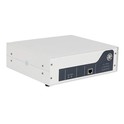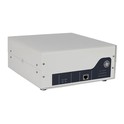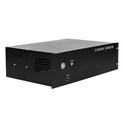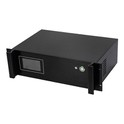Ultrasonic nondestructive testing technology is usually required to detect circumferential cracks. The following is a common method:
Prepare ultrasonic testing equipment: Select appropriate ultrasonic testing equipment, such as ultrasonic probes, instruments, etc.
1. Apply coupling agent: Apply a layer of coupling agent, usually a liquid or gel-like substance, on the surface of the material to be tested. The coupling agent helps the propagation and reception of ultrasonic waves.
2. Probe placement and setting: Place the ultrasonic probe on the surface of the material to be tested, and set the parameters of the ultrasonic testing instrument, such as frequency, gain, etc., according to the specific situation.
3. Send ultrasonic signals: Send ultrasonic signals into the material through the ultrasonic probe. When ultrasonic waves propagate in the material, if there are circumferential cracks, reflection, scattering or interference will occur.
4. Receive and analyze signals: The ultrasonic probe receives the signals generated by reflection, scattering or interference and converts them into electrical signals. By analyzing these received signals, it can be determined whether there are circumferential cracks and their location, size and other information.
Result evaluation: According to the analysis results, evaluate the situation of circumferential cracks in the material, such as the depth, length, shape, etc. of the cracks.
It should be noted that the specific detection methods and steps may vary depending on different actual situations, so when conducting circumferential crack detection, it is best to refer to the guidance of professionals or relevant testing standards.
May 04, 2024
Ultrasonic Transducer Detection Of Circumferential Cracks
Send Inquiry






